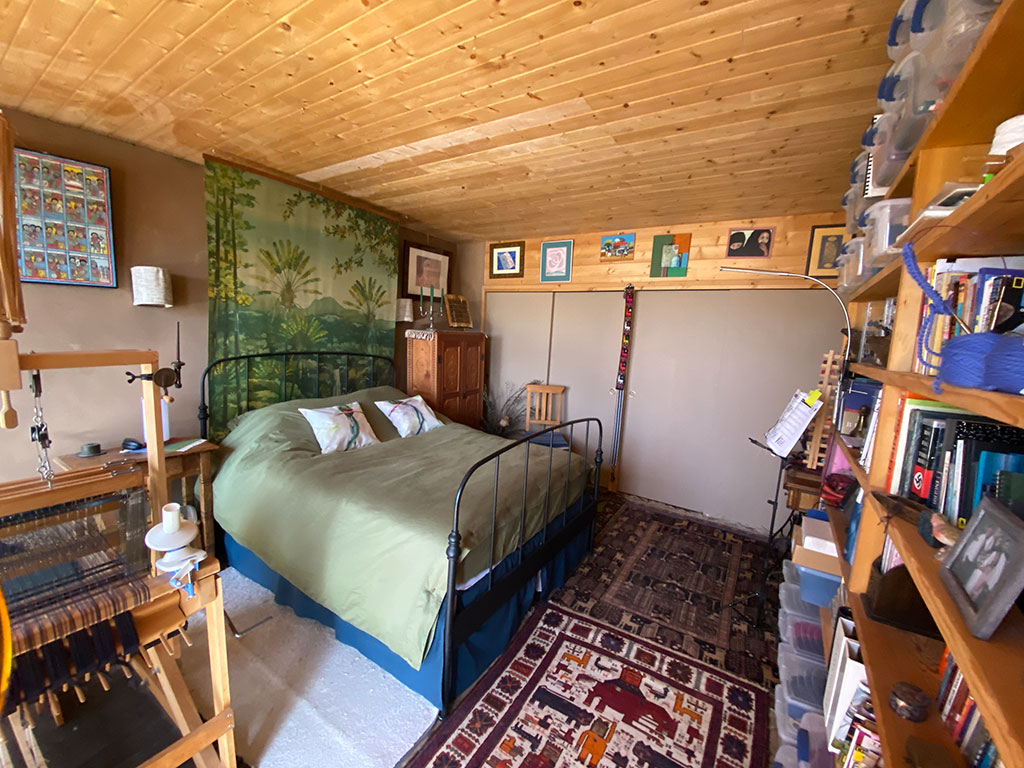The Question of how a structural earth-rammed tire wall would do in a fire has long been an issue for which we could only offer an intelligent opinion. People think that because tire piles in tire dumps burn so easily and are so hard to put out, that an earth-rammed tire wall would be the same. Our answer has been to compare a pile of tires (with air all around) to a lightly crumpled up piece of newspaper. Both of these would torch very easily due to the adequate air circulation around so many sufaces thus fueling the fire with both flammable material and oxygen. However, a New York City phone book would be very hard to get to catch on fire and keep burning. This is obvious because of the density and lack of air around every page. An earth-rammed tire wall with several coats of plaster over it would create a similar situation to the New York City phone book. The rubber which is the only flammable part of the wall is essentially buried in earth – no exposure of flammable material to oxygen. Until recently this explanation has been all we have had to offer on how Earthships would do in a fire.

One of the many forest fires that hit New Mexico in the summer of 1996 was near Taos, the home of Earthship operations. This fire was called the Hondo fire and it devoured many conventional homes that were in the several thousand acres of forest that burned. Most were wood frame homes that were absolutely leveled. There was one Earthship caught right in the middle of the fire. At the time of the fire construction was not totally finished. The interior tire walls were not fully covered with plaster. They were just packed out with mud and ready for the actual plaster coats. The fire came through and burned off the roof, front face and all wood on the. inside. The only things not destroyed were the earth-rammed tire walls and the aluminum can walls. All conventional materials (wood, glass, metal, roofing and insulation) were totally destroyed while all recycled materials used in methods particular to the Earthship concept were left virtually undamaged. We will be able to clean up the mess and add a new roof and front face to the “still usable” structural and thermal mass walls of the burned out Earthship.
Currently, we are using metal or cement roofing on all Earthships. This particular Earthship was built a few years earlier when we were using Brai (a melted tar/ rubber product) roofing. This probably helped catch the Earthship on fire. Now the new metal or cement roofs would work against a fire catching on.
Another interesting aspect of the fire was that it burned much hotter inside the Earthship than outside. This is because there was simply a greater concentration of fuel inside the building than outside in the forest itself. This hotter inside fire was evident as the exposed tires outside were only scorched while some exposed tires inside (where plaster was incomplete) were melted and the steel strands were showing. All tires or parts of tires that were covered with mud plaster were undamaged even in the much hotter inside fire. Exposed rubber melted but the earth rammed tire wall itself did not catch ·on fire. The places where the exposed rubber melted can be patched with cement plaster.
The aluminum can and bottle walls were basically undamaged in any way. In some cases the bottles themselves were melted but the cement mortar is the structure of a can or bottle wall so whatever happens to the bottles or the cans makes no difference structurally.
Think of just how many building techniques (conventional or new alternative) could have held up this way in the middle of a raging forest fire. As time marches on, Earthships continue to prove themselves worthy of consideration for being the vessel of choice for sailing on the seas of tomorrow.

Houses that employ tire walls always apply a thick earthen or cement plaster over the tires, so they are no longer exposed to the atmosphere and are unlikely to burn. Rather than the tires being a serious fire risk (as they are on their own), they are sealed within thick walls so that they cannot react with oxygen. The plaster adds fire resistance to the building and tire homes usually meet (or exceed) local fire regulations.
Because the tire is full of soil, it does not burn when exposed to fire. In 1996 after a fire swept through many conventional homes in New Mexico, an Earthship discovered in the aftermath was relatively unharmed. Only the south-facing wall and the roof had burned away, compared to the total destruction of the conventional homes.
What is an Earthship Home?
An Earthship is a type of passive solar house that is made of both natural and upcycled materials (such as earth-packed tires). Earthships can be completely off-grid or partially off-grid.
Earthships can be built in any part of the world, in any climate (with a permit) and still provide electricity, potable water, contained sewage treatment and sustainable food production.
Earthships are thermal mass homes first, passive solar homes second.
Whatever temperature goes into an Earthship, it will hold… and since it is also a Passive Solar House, it is also very tight and interacts only with the sun and the earth for heating and cooling, providing stable comfort year round in any climate. This results in being able to provide a sustainable home on property that may not be situated to the ideal of 13.5 degrees east of south.







Leave A Comment